Evergreen Plant Ideas for Shady Gardens
August 4th, 2022 | Categories
Shade is just an inevitable part of gardening, and many people often wonder if they can plant anything in such conditions. Do not fret, the answer is a resounding YES! In fact, there are plenty of wonderful evergreen plants that can thrive in shady conditions. Many create interest throughout the entire year also producing wonderful blooms of flowers and even richly coloured berries along with their evergreen foliage.
Shady spots can be truly transformed with the right choice of evergreen plants. In this guide, we are here to smash the common misconception that shady gardens can’t be little havens of interest – even paradise – for you to go and enjoy or admire from the window. Before we get started though and get into our list of ideas of evergreen plants that do well in shade, there are some things to consider first.
How Much Shade Does Your Garden Have?
The first thing you need to consider and understand is how shaded your garden is because there are a wide range of specific shade situations, and different plants respond differently to these different levels of shade. All green plants depend on sunlight to make the sugars necessary to provide energy for the plant. Too much shade for a particular plant means lower sugar production, reduced growth, reduced flowering, and possibly the death of the plant.
Here are the main types of shade, and it could be a mixture of each:
Light Shade
Open to the sky, bright even, but screened from direct sunlight by something such as a structure like a wall or trees.
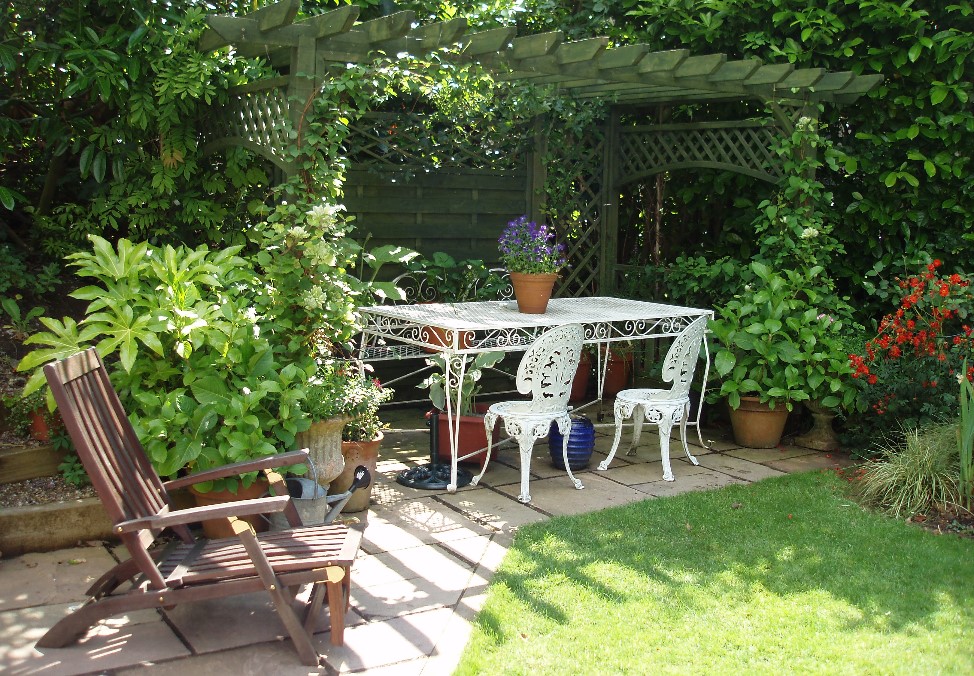
Partial Shade
A spot that gets three to six hours of direct sunlight per day but is shaded for the rest of the time.
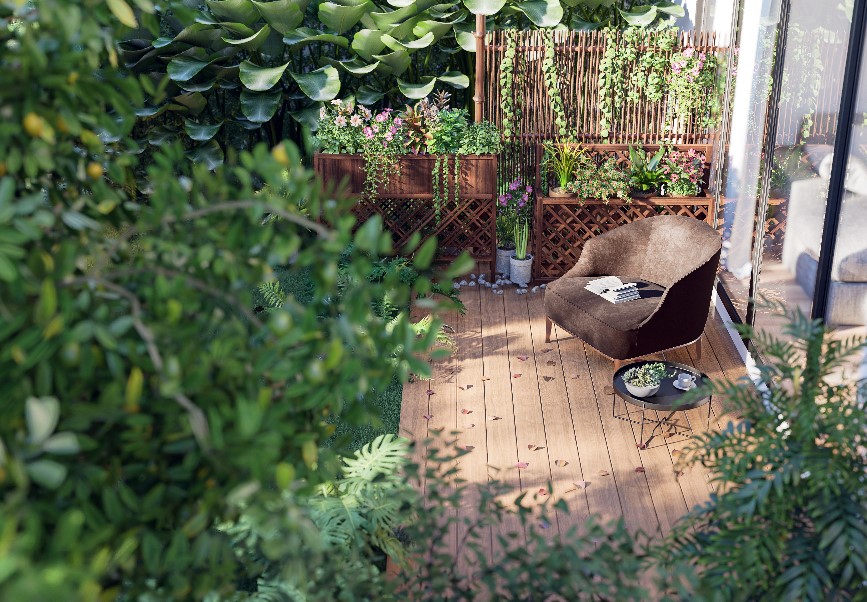
Dappled Shade
Dappled shade is classed as shade caused by something partially blocking sunlight such as a tree canopy. The light still shines through in a blotchy manner to a lesser degree. Akin to partial shade depending how much light makes it through.
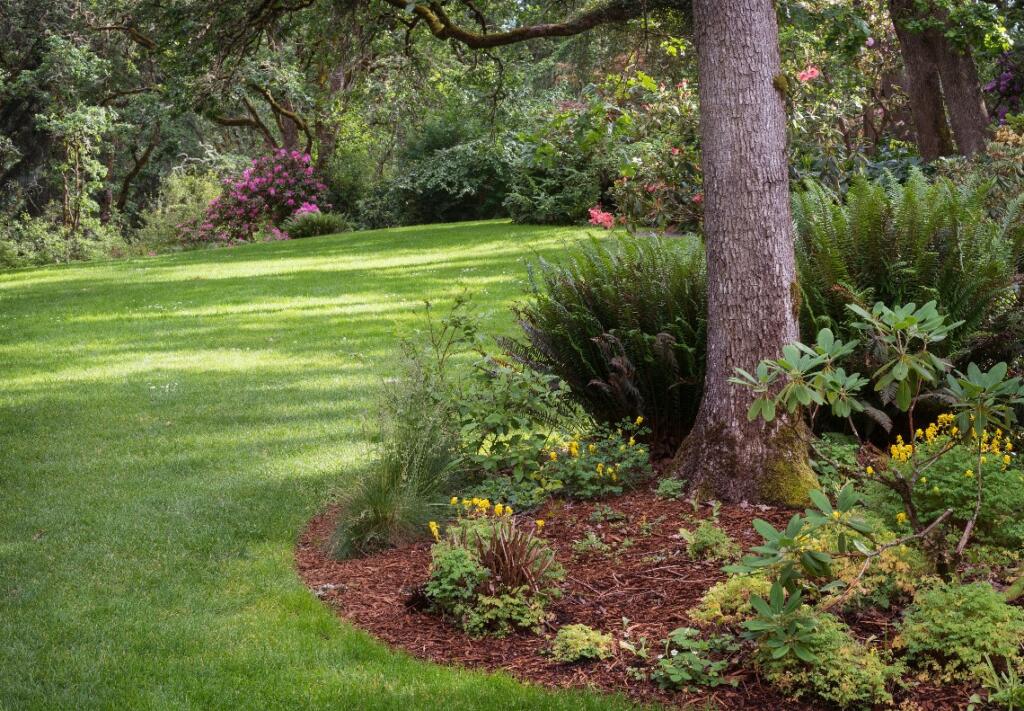
Moderate Shade
A spot that gets only about two to three hours of direct sunlight per day. Could be partial shade though. See the ‘important note’ below.
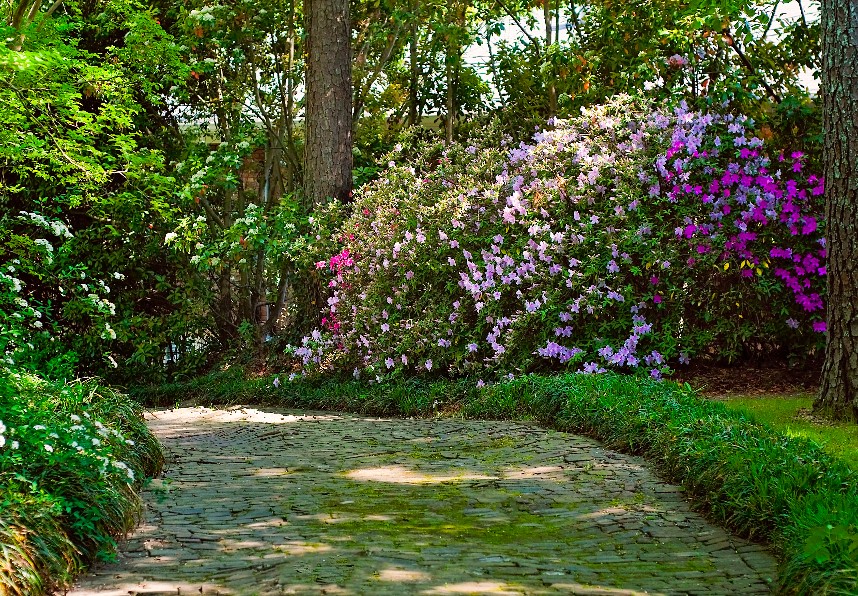
Deep or Heavy Shade
A spot that gets less than two hours of direct sun per day, perhaps blocked by a building or dense tree cover.
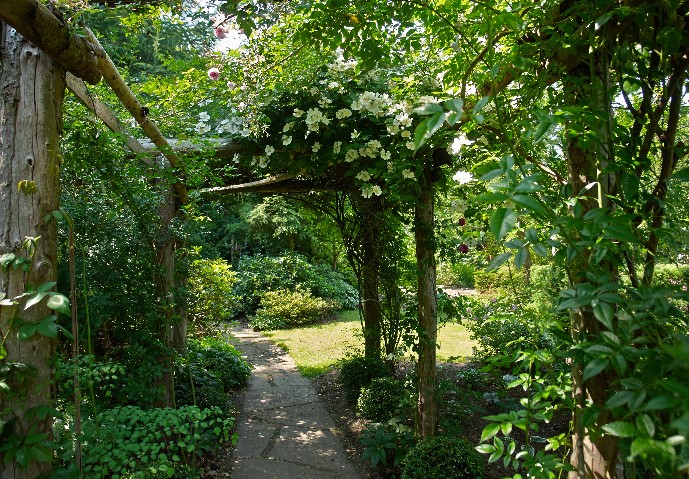
Important note
If during these timeframes you get the sun during the midday hours, this actually applies more direct light, and might upgrade your shade category. For example, you might think you have moderate shade because you only get up to three hours of direct sunlight per day, but if these hours of sun occur around midday when the sun is at its highest, then you would say it’s a partially shaded area.
What Type of Soil do You Have?
Next, it’s important to also consider your soil in the shaded areas of the garden. Shaded areas typically have very damp and soggy soil, or very dry soil.
If your soil happens to be dry, then the best thing for you to do prior to planting anything is to improve it. This can be done fairly simply by digging it up, and then digging in and mixing plenty of good nutritious compost, as well a drainage improver like Perlite. This is even more essential if you have a heavy clay soil. Afterwards, it’s also advisable to apply an organic mulch over the top of the planting area and around the base of the plants each year in spring. This will break down and improve the soil further, while also releasing new nutrients down to the roots of the plants.
If it’s the opposite and your soil happens to be wet and soggy, then you do exactly the same thing but with more emphasis placed on improving the drainage. Dig in more course material such as grit or a greater amount of Perlite. Also, while it is a little further on, you could consider specific plants that like a wetter soil, as they will begin to soak a lot of it up thereby improving it further.
14 Evergreen Plant Ideas for Shade
Here are our top picks of stunning evergreen plants for shade, some have fantastic amounts of interest throughout the year you might not believe:
Viburnum Tinus
A lovely large growing – three to four metres tall – shade tolerant evergreen shrub with splendid dark green, oval shaped pointed leaves. It brings interest year-round especially over winter when beautiful white and pinkish scented flowers form over a long period through to spring, then followed by dark bluish almost black berries that last throughout the summer. It is very easy to grow and with a bush growing habit makes for a great decorative hedge.
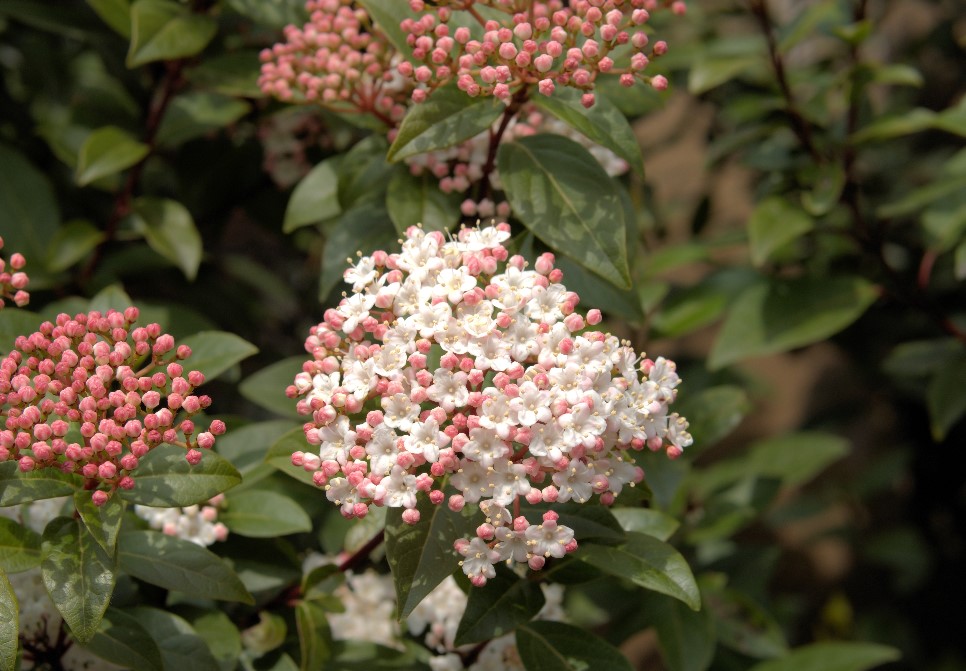
Viburnum Davidii
Another one in the Viburnum family, the shade tolerant Davidii doesn’t grow as large as the Tinus, maxing out at roughly one to two metres tall. It has the same oval pointed leaves that are a very deep green in colour. Lovely looking and scented small white flowers form in the spring and last until early summer, when either red, or dark bluish almost black berries can form when cross-pollinated. Another one that’s easy to grow requiring little maintenance.
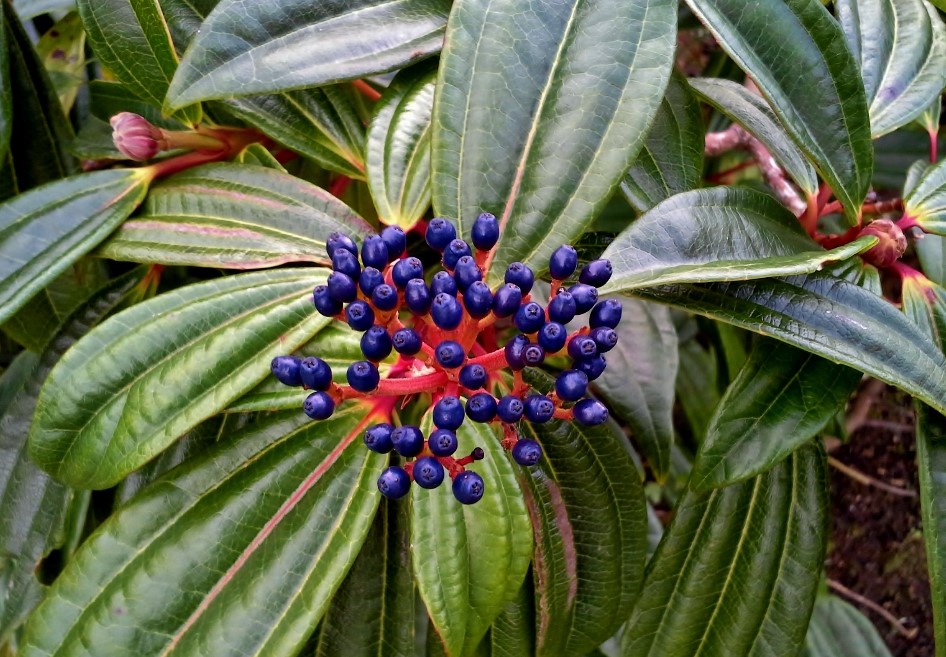
Pieris Forest Flame
A fantastic shade tolerant shrub that can grow to four metres tall and produces year-round interest. In the spring it has a wonderful burst of bright red leaves, that gradually turn to pink, then a white/cream, then green. These are fantastically contrasted by its hanging and very pretty spring flowers. The flowers will fade by early summer, but the various foliage colours can persist for a while longer before eventually all turning green. The vibrant green foliage looks great in the autumn and winter months until spring when it starts all over again. Very easy to grow and manage.
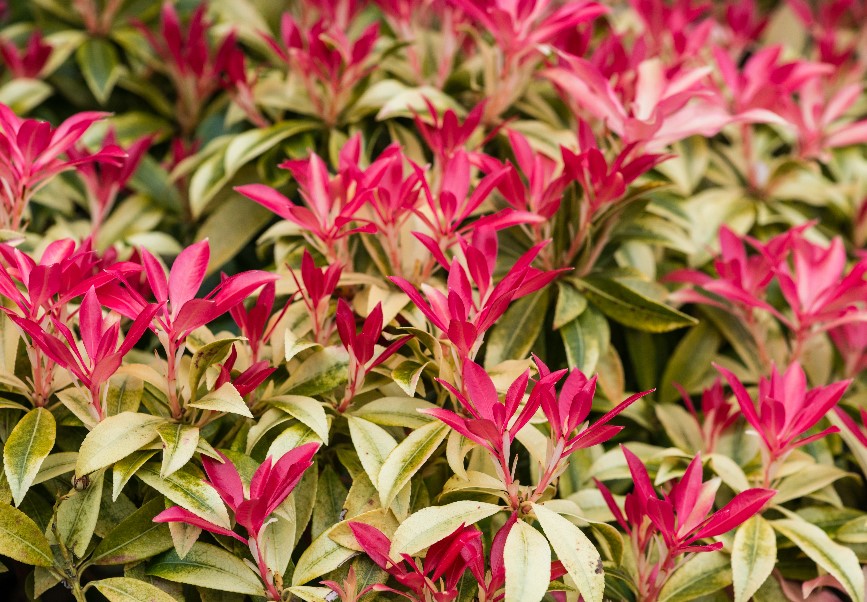
Mahonia
A very colourful shrub that does best in partial and even full shade. Mahonia is an easy to grow shrub, abundant in winter colour with its long strings of fragrant vivid yellow flowers that can last through to late spring. The fragrance is said to be pleasant and resemble lily-of-the-valley. Following the flowers, dark blue almost black berries then form to provide more yet interest. Its leaves are long and spiny, almost holly like.
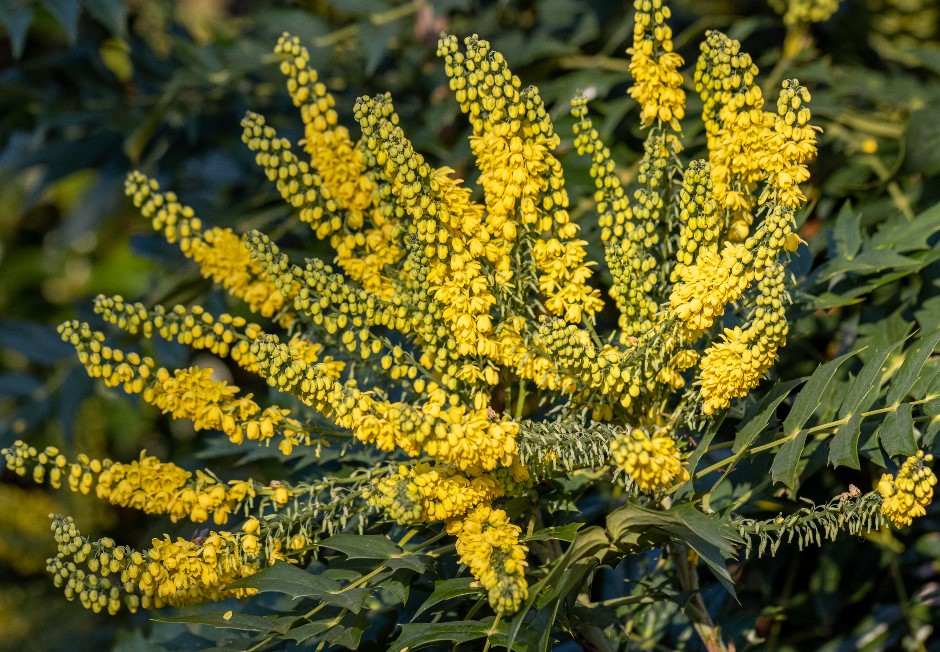
Rhododendrons
Rhododendrons prefer a partially shaded spot and are a fantastic way to brighten up a shady garden with their large beautiful and varied colours of fragrant flowers that flower from spring to early summer and in colours from pinks to purples, reds, and whites. They are slow growing but can reach heights of around two metres. They are also quite easy to care for but require a more acidic soil which is easily achieved by digging in relevant material when planting.
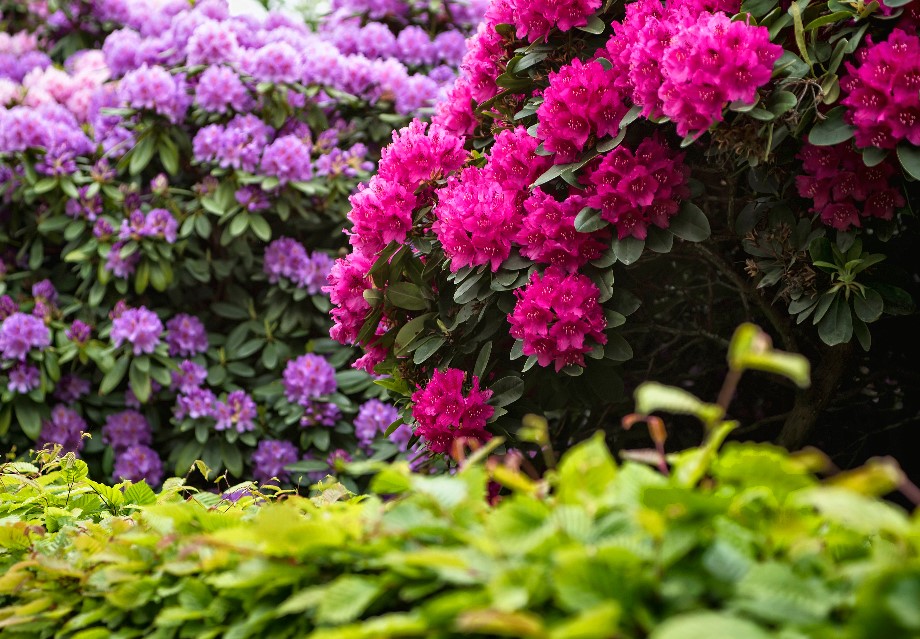
Azaleas
Of course, we can’t mention Rhododendrons without also highlighting Azaleas. All azalea flowers are usually smaller, but come in a more vivid array of shades, and are very fragrant. They also flower from spring to early summer. People typically talk about rhododendrons and azaleas together but just remember that all azaleas are rhododendrons but not all rhododendrons are azaleas. This is because most azaleas are deciduous but there are growing varieties that are evergreen (enough to be on this list) whereas true rhododendrons are evergreen. Just something to keep in mind.
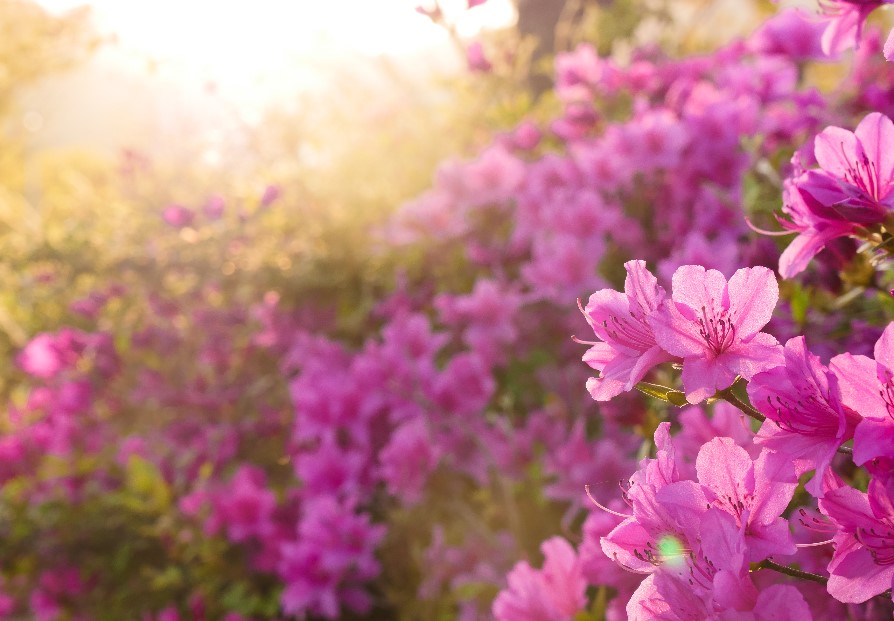
Skimmia Japonica
Skimmia Japonica is a great choice for shady gardens because they prefer a shaded spot and can even tolerate deep shade. Planting in too sunny a spot will cause the leaves to turn yellow. The plant itself is slow growing but depending on the type can be as tall as a metre or several. The leaves are oval shaped and dark green typically of a leathery feel. The male variety has creamy-white or purply-red fragrant flowers that come in late autumn and stay through until the spring followed by lovely white or red berries. The female variety has red berries for most of the year, or year-round, depending on the variety. Top tip, best to have a male and female plant close by, as male varieties don’t produce berries otherwise, and female varieties will bear fruit only if grown near a male.
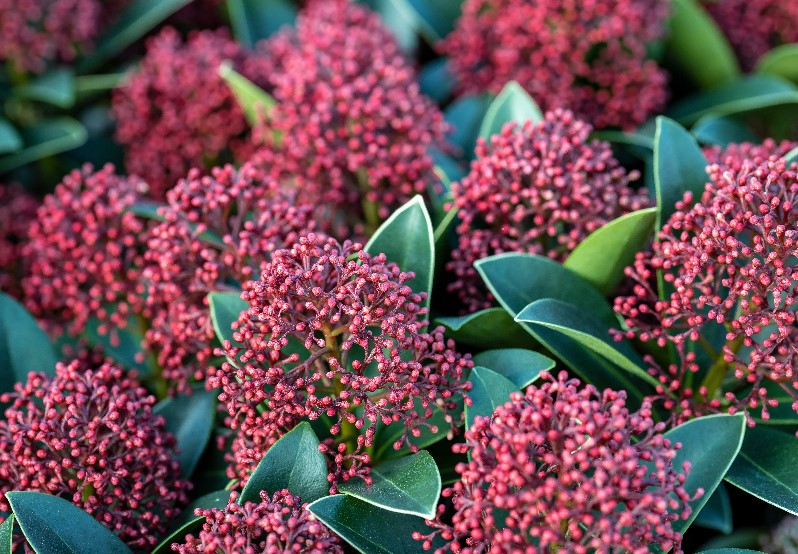
Ferns
Ferns are a wonderful way to add interest to a shady garden. While they don’t flower, they are desired for their highly decorative fronds (the large leaflike part of a fern). Ferns are ancient plants and originated in dense woodlands and forests where little sunlight could penetrate through the canopy. Thus, they are amazingly well suited to shady gardens. There are evergreen and semi-evergreen varieties as well as deciduous types that die back in winter, so just make sure you don’t opt for these. Plenty of ferns will also grow in both dry and damp shade. They are wonderful plants that require minimal care and attention. Many ferns will even do well in and around garden ponds.
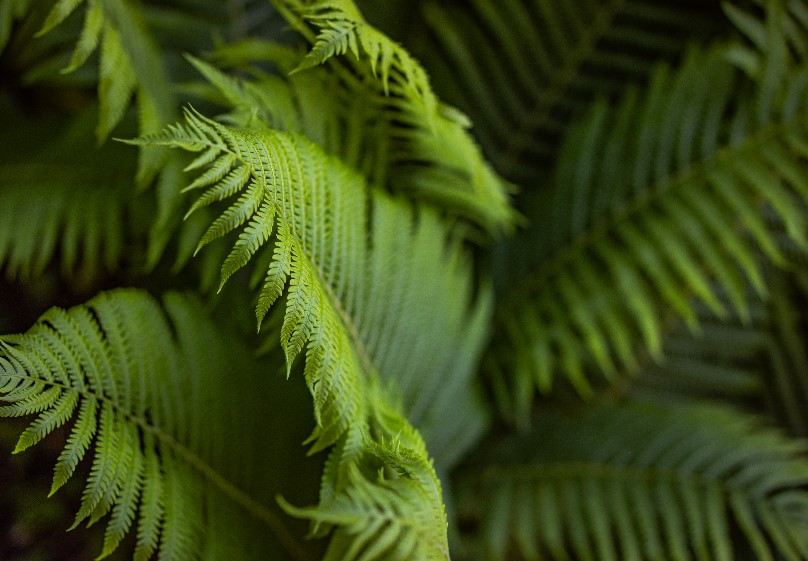
Hebes
Hebes are another great option similar to buxus as they thrive in many different conditions and are easy to maintain, but they will produce small attractive flowers in the summer that will last through to autumn. They offer great interest with their colourful flowers from white pinks, deep reds, blues and purples. They are compact shrubs that tend to grow in a rounded shape, so they are a good alternative to buxus.
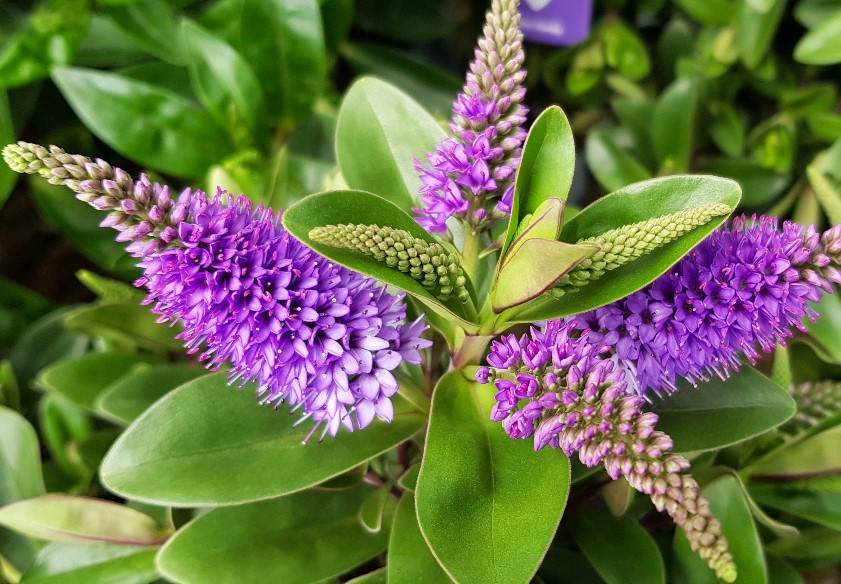
Ivy (Hedera)
Ivy is a versatile evergreen plant that will happily grow in the deepest of shade. The classic Ivy we all know has beautiful dark green leaves, but there are other variegated varieties with dual colours that can be quite striking and give more interest, brightening up darker corners and parts of the garden. Ivy plants will happily climb up any wall or structure like trellis’, so they are a great option to plant at the back of a bed or border, to then plant more colourful options in front of.
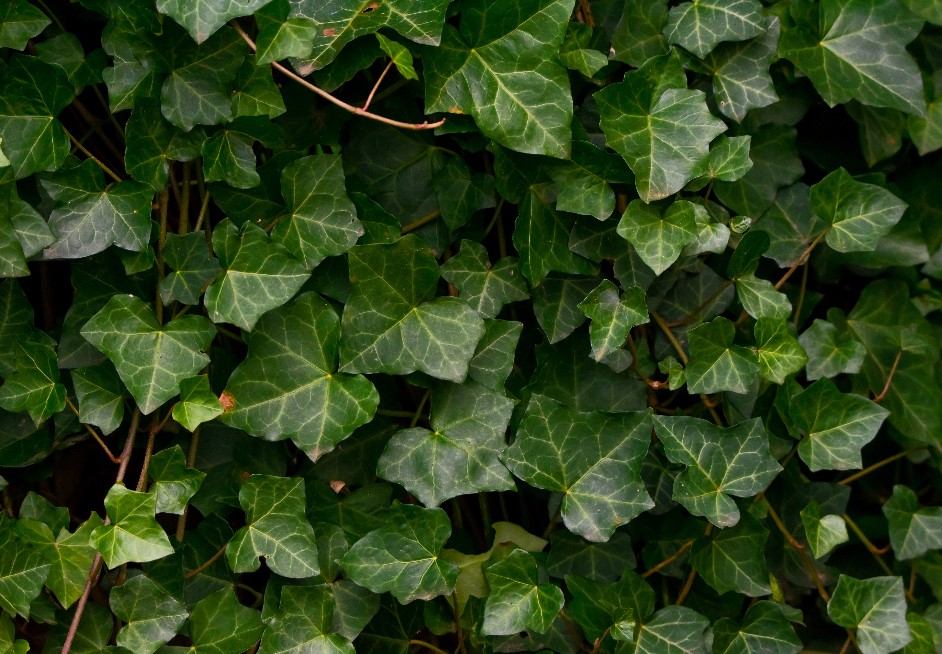
Japanese Laurel (Aucuba)
Tolerant of full shade, dense and compact, the Japanese Laurel is a great choice for interest. It has lovely leathery dark green – almost holly like – leaves and clusters of red-purple flowers that appear in spring, when are then followed by bright red berries. Some types have mottled green and golden yellow leaves which look quite striking especially when the flowers and berries emerge.
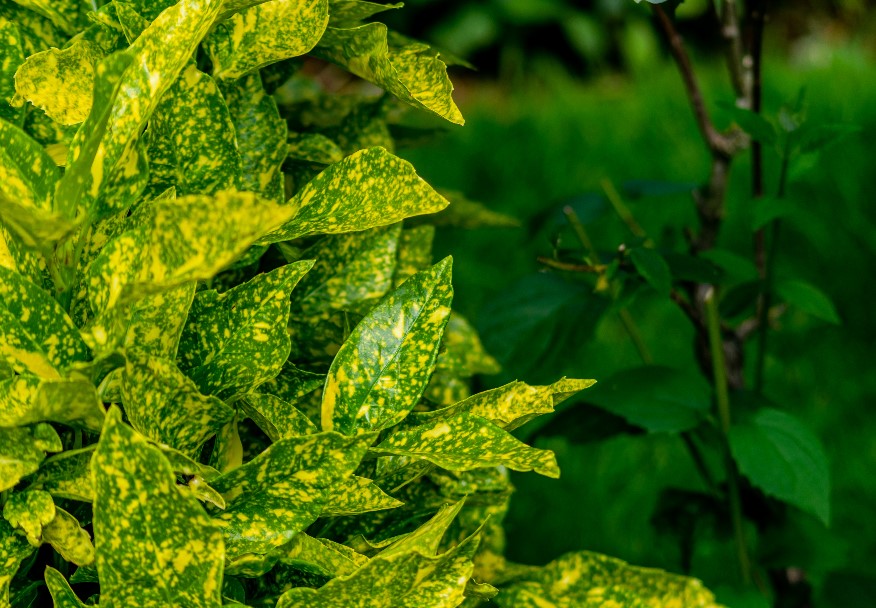
Euonymus
There are many varieties of Euonymus shrub and generally all are great for growing in the shade. In fact, the popular fortunei ‘Emerald Gaiety’ variety could be the most widely planted shrub for shady gardens. It grows in a sprawling fashion and won’t get too tall. It has variegated leaves, green in the centre and yellow on the outside. Another great option to really brighten shady spots is the fortunei ‘Emerald n Gold’ variety, that is a little bit brighter than the Emerald Gaiety, but with the added bonus of producing beautiful little white flowers in the mid-to-late summer months.
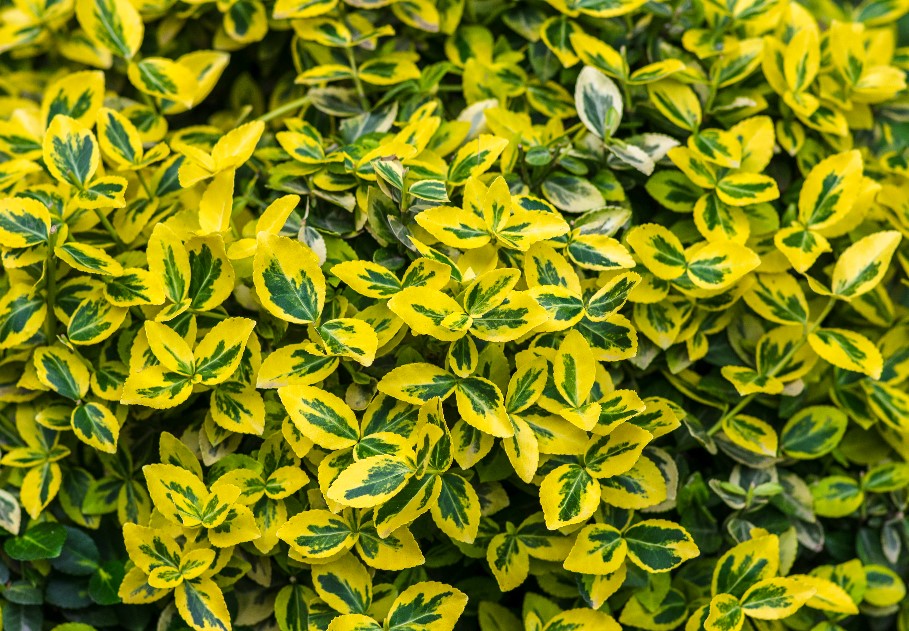
Holly (Ilex)
Holly plants can transform a space with light to partial shade because of their attractive shiny leaves and iconic red berries making it instantly recognisable. Opt for a variegated variety with green and yellow leaves for even more interest in combination with its deep red berries. It is a relatively compact shrub, growing to be about two metres tall and about a metre wide. Though some grow even taller. They are a great choice as a hedging plant for their dense growth and prickly leaves.
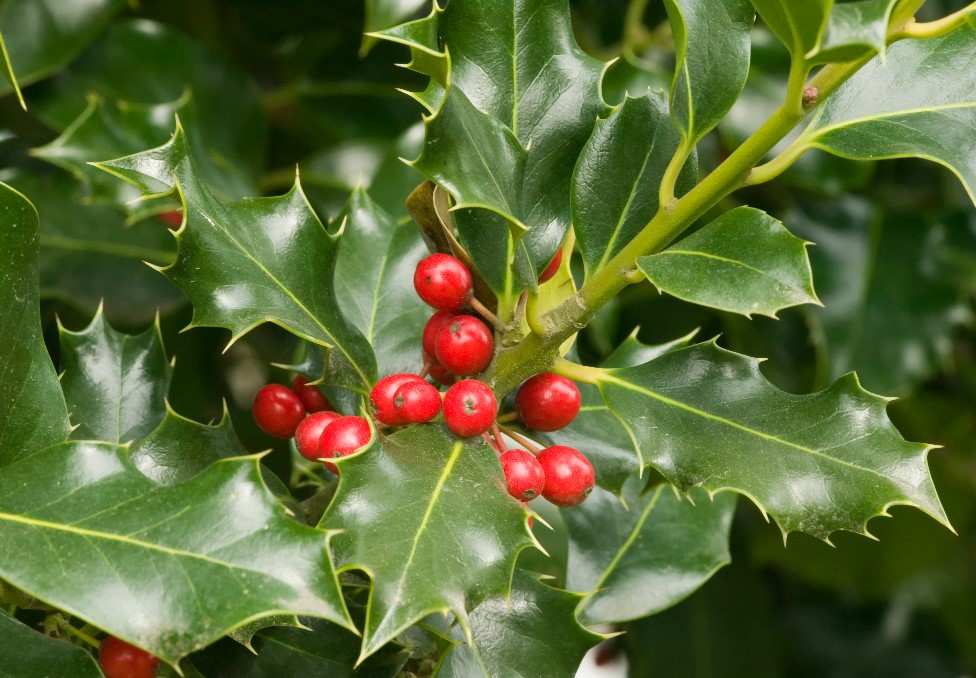
Adding Evergreen Interest to Shadier Gardens
Hopefully now you can see that having a shady garden doesn’t mean you are resigned to a dull and somewhat lifeless space! Interest can be added, created, and shaped to add fresh life to your garden. With our suggested evergreen plants, you can start this process off, and then think about more colourful flowers afterward. Evergreen plants are a great complement for more colourful flowers and shrubs because they can create depth and texture. When pairing together, consider planting evergreens at the backs of beds and borders to allow the more colourful choices in front to really stand out. Before you know it, you’ll have added a whole lot of interest to your shaded garden that you’ll love for years to come!






